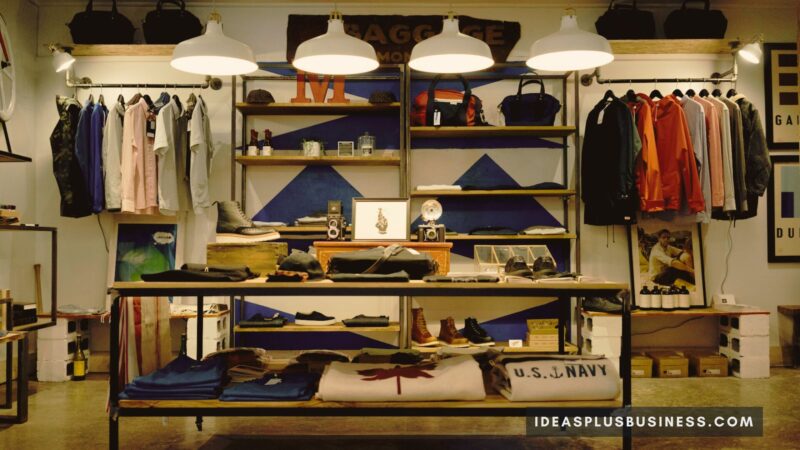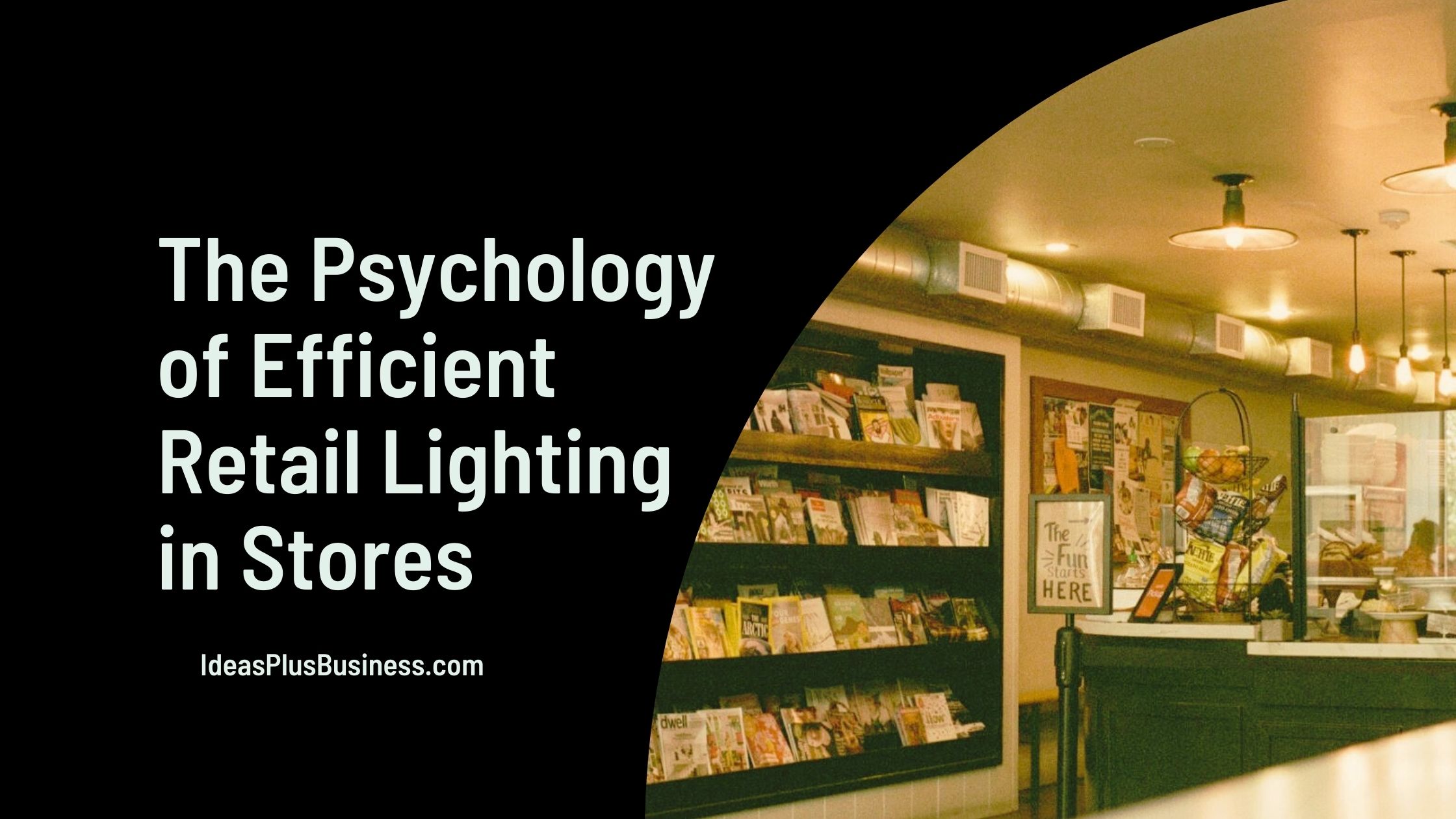In retail space optimization, the flick of a switch can transform the ambiance, mood, and even the buying behavior of customers.
Retail lighting plays a big role in shaping the customer’s journey and influencing their purchasing decisions. With the flip of a switch, retailers can evoke emotions, create immersive experiences, and guide customers’ attention toward specific products or areas within the store.
Imagine entering a retail store where soft, warm light envelops you like a comforting embrace. The glow of carefully positioned spotlights showcases the intricate details of a meticulously curated product display, drawing your eyes toward its allure.
Contrast this with the bright, clinical lighting of a typical supermarket, where the focus is solely on efficiency. The difference in ambiance is palpable, and it directly impacts the customer’s mood and shopping behavior. In a warm and inviting atmosphere, customers are more likely to linger, explore, and make purchases.
The art of retail space optimization lies in understanding how to harness the power of light to create an environment that captivates the senses and leaves a lasting impression.
In this article, we’ll explore how the strategic use of efficient retail lighting in stores is not just a matter of utility, but a powerful tool in crafting unforgettable shopping experiences.
The Psychology of Retail Lighting in Stores
Our journey begins with understanding the subtle, yet impactful, role that light plays in shaping our perceptions.
The strategic use of lighting can influence the perceived size and layout of a retail space. Soft, diffused lighting can create the illusion of a larger, more expansive environment, making customers feel less confined and more comfortable.
Conversely, well-defined pools of light can create intimate zones within a larger space, guiding customers’ attention toward specific areas or products.
Color is another powerful tool in the lighting designer’s arsenal. Studies suggest that different lighting levels and colors influence consumer emotions and behaviors. Different colors evoke different emotions and can be used to create a desired atmosphere.
For example, warm colors like red, orange, and yellow stimulate excitement and energy, making them ideal for high-traffic areas or impulse-buy displays. Warm lights can create a welcoming atmosphere that encourages leisure browsing, while bright lights inspire activity and alertness, perfect for highlighting specific products.
Cool colors like blue and green promote a sense of tranquility and relaxation, making them suitable for areas where customers are likely to spend more time browsing or considering their purchases. The interplay of light and shadow can also be used to create dramatic effects and draw attention to specific products or displays.
By carefully controlling the direction, intensity, and color of light, retailers can create focal points that capture the customer’s gaze and encourage them to engage with the products.

Strategic Placement and Design of Retail Lighting in Stores
Mastering the art of lighting in retail stores involves more than selecting the right bulbs. Strategic retail lighting placement and design play crucial roles.
Overhead lighting combined with focused, task-specific lighting can guide customers through a store, highlighting promotions and high-margin items. Creative designs can also contribute to a store’s identity, making it a memorable part of the shopping experience.
For those looking to further refine their retail space’s lighting, exploring options for high quality LED shop lights can prove invaluable. Enhanced lighting not only showcases products in their best light but also contributes to an efficient and dynamic shopping atmosphere.
Impact of Retail Lighting on Sales and Customer Experience
Let’s talk dollars and sense. The impact of lighting on sales and customer experience in retail spaces cannot be overstated.
Integrating efficient lighting strategies can lead to increased sales by enhancing product visibility and creating an inviting shopping environment. A well-lit store can improve customer satisfaction, making shoppers feel safe and more inclined to return.
The right lighting touches not just the eyes, but also the heart and wallet. Strategic retail lighting techniques have the power to directly influence consumer behavior, making them more likely to purchase items and create a positive shopping experience.
Some of the impacts of retail lighting on increased sales and improved customer experience are:
Increased Sales
- Enhanced Product Visibility: Efficient lighting ensures that products are well-lit and showcased effectively, making them more noticeable to customers. This increased visibility leads to higher chances of customers noticing and selecting items they might otherwise overlook in dimly lit environments.
- Creating a Positive Ambiance: A well-lit store creates a more inviting and pleasant shopping atmosphere. Bright and evenly distributed lighting enhances the overall ambiance, encouraging customers to linger longer and browse more items, which often results in increased sales.
Improved Customer Satisfaction
- Safety and Security: Proper lighting contributes to a sense of safety and security within the store. Customers feel more comfortable and at ease when they can see their surroundings, making them more likely to return for future purchases.
- Emotional Connection: Lighting can evoke emotions and create a memorable shopping experience. Warm and inviting lighting can make customers feel welcomed and relaxed, influencing their overall perception of the brand and their likelihood to recommend it to others.
The right retail lighting strategy in stores not only affects the visual appeal of retail space but also influences customer psychology and behavior. By optimizing lighting conditions, retailers can create an environment that enhances product visibility, improves customer satisfaction, and ultimately drives sales growth.

Technology’s Role in Future-Proofing Retail Spaces
As we look ahead, the fusion of lighting technology with digital innovations presents exciting opportunities.
Imagine lighting systems that adjust in real-time based on the natural light entering the store or the density of shoppers in different aisles. Such advancements are not far off, promising to bring new levels of efficiency and personalization to the retail experience.
Adaptive Lighting in Retail Stores and Customer Behavior
Delving deeper into the nuances of customer behavior, the role of adaptive lighting emerges as a fascinating tool for retailers.
By adjusting lighting conditions according to different times of the day or specific events, retailers can create a dynamic shopping environment that subconsciously guides customer behavior toward desired outcomes. This level of control opens up new avenues for personalized shopping experiences that can significantly boost customer engagement and loyalty.
The Evolution of Retail Lighting
Gone are the days when retail lighting was a mere afterthought. The past few decades have witnessed a brilliant evolution from traditional incandescent bulbs to today’s energy-efficient LEDs and smart lighting systems.
This progression isn’t just about saving energy; it’s about ushering in a new era where lighting adapts to enhance both the appeal of products and the comfort of shoppers.
Integrating Retail Lighting with Other Sensory Elements
Integrating lighting with other sensory elements in retail spaces has emerged as a powerful strategy to create immersive and memorable experiences for shoppers.
Beyond lighting, the integration of sensory elements such as music, scent, and texture can elevate the retail atmosphere to new heights.
Music and Lighting
The rhythmic flow of music intertwines with the visual rhythm of light, creating an atmosphere that can energize or soothe shoppers.
Upbeat music paired with dynamic lighting can stimulate shoppers, encouraging exploration and interaction within the store. Conversely, soft music and gentle lighting can create a serene and calming ambiance, ideal for boutiques or specialty shops.
Scent and Lighting
The sense of smell is closely linked to memory and emotion, and scent can be a potent tool in retail marketing.
Lighting can enhance the impact of scent by highlighting aromatic displays or creating pools of light that capture and diffuse fragrances. For example, a spa-like environment can be evoked by combining soft lighting with lavender or eucalyptus scents.
Texture and Lighting
The visual and tactile qualities of materials can be heightened through strategic lighting.
Rough textures, when illuminated by grazing light, create dramatic shadows that add depth and intrigue to displays. Smooth, glossy surfaces under soft lighting, on the other hand, exude elegance and sophistication.
Lighting plays a harmonious role with these elements, setting the stage for a multi-sensory experience that captivates shoppers. This holistic approach to retail lighting design not only delights customers but also fosters a unique brand identity that sets a store apart from its competitors.

Challenges and Considerations in Implementing Efficient Lighting in Retail Stores
Despite the clear advantages, the transition to efficient lighting systems comes with its own set of challenges.
Initial setup costs, the complexity of technology, and the need for proper planning and implementation strategies are significant considerations. Retailers must navigate these hurdles thoughtfully, balancing the desire for innovation with practicality and cost-effectiveness.
However, the benefits in terms of customer satisfaction, sales improvement, and sustainability impact make the effort worthwhile, prompting a mindful exploration of creative lighting solutions.
Sustainability and Economic Benefits of Retail Lighting
In today’s environmentally conscious market, sustainability is not just a buzzword but a business strategy.
Adopting energy-efficient retail lighting is a visible commitment to reducing environmental impact, which can resonate with customers and enhance a brand’s reputation. Additionally, the long-term savings on energy costs offer a compelling financial incentive for retailers.
Conclusion
A well-designed retail lighting scheme is not just a luxury, but a necessity. This is an exciting time for retailers to harness the power of light in creating engaging, productive, and sustainable shopping environments.
By investing in strategic retail lighting solutions, retailers can create immersive shopping experiences that delight customers, increase sales, and build lasting brand loyalty.
As retail lighting solutions continue to evolve, those who shine a light on innovation will see their spaces transformed and watch their businesses flourish. Let’s step into the future, one illuminated step at a time.

I am Adeyemi Adetilewa, an SEO Specialist helping online businesses grow through content creation and proven SEO strategies. Proficient in WordPress CMS, Technical Site Audits, Search Engine Optimization, Keyword Research, and Technical Writing (Portfolio).
I help brands share unique and impactful stories through the use of public relations, advertising, and online marketing. My work has been featured in the Huffington Post, Thrive Global, Addicted2Success, Hackernoon, The Good Men Project, and other publications.

